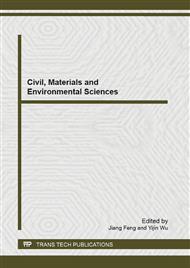p.300
p.304
p.310
p.317
p.323
p.327
p.331
p.337
p.341
Removal of NO from Gas by Corona Discharge with H2O2 Solution Oxidation
Abstract:
The effects of the supply voltage, water flow rate, concentration of H2O2 absorption and flue gas flow rate on NO removal rate were studied. The chemical reaction mechanism of NO removal was discussed. It was concluded that the NO removal rate increased the increasing of supply voltage, water flow rate and concentration of H2O2, and decreased with the increasing of the flue gas flow rate on the experimental conditions. On the synergy with corona discharge and H2O2 solution oxidation, NO removal rate reached 60.2%.
Info:
Periodical:
Pages:
323-326
Citation:
Online since:
August 2013
Authors:
Keywords:
Price:
Сopyright:
© 2013 Trans Tech Publications Ltd. All Rights Reserved
Share:
Citation:


